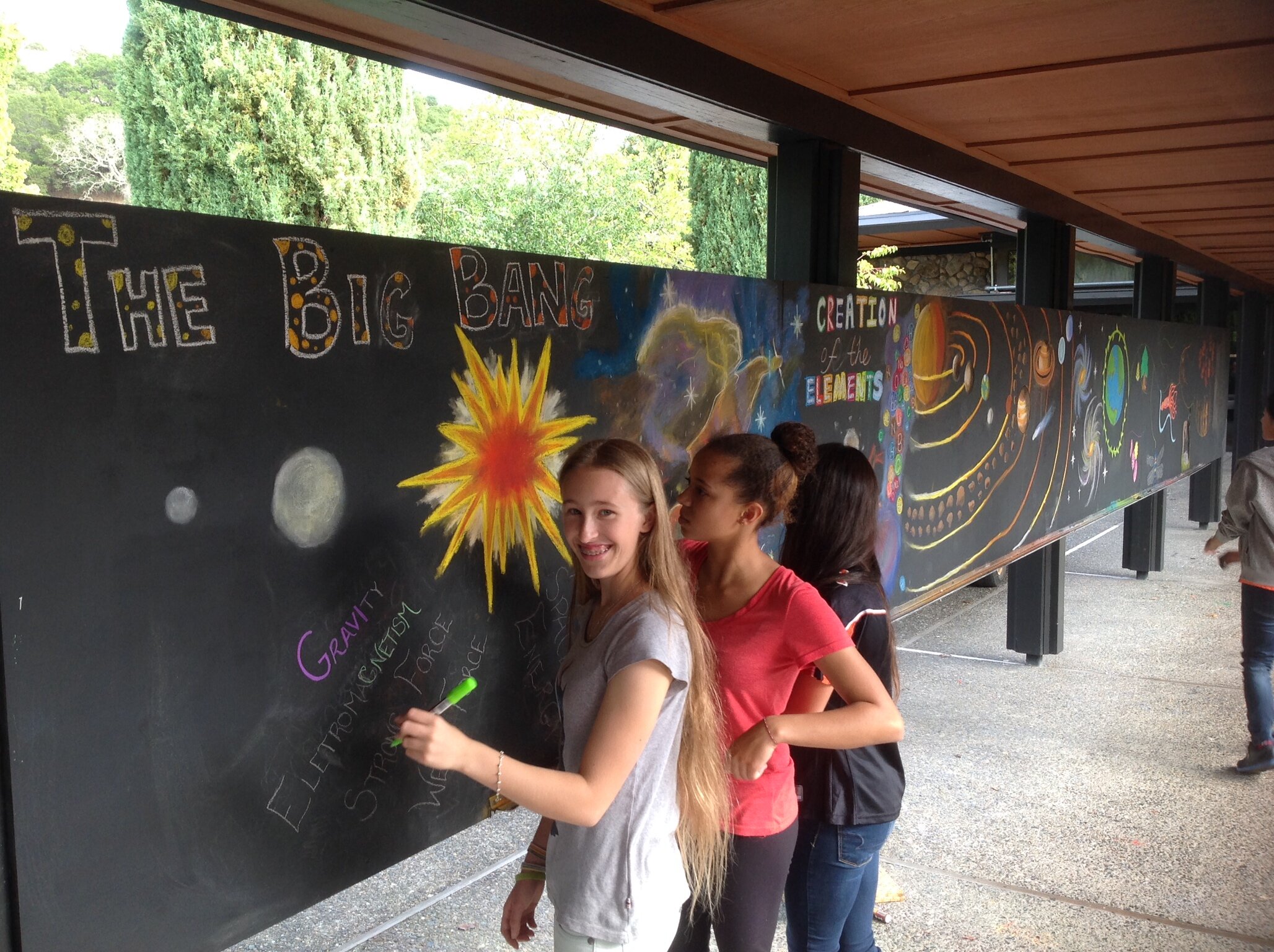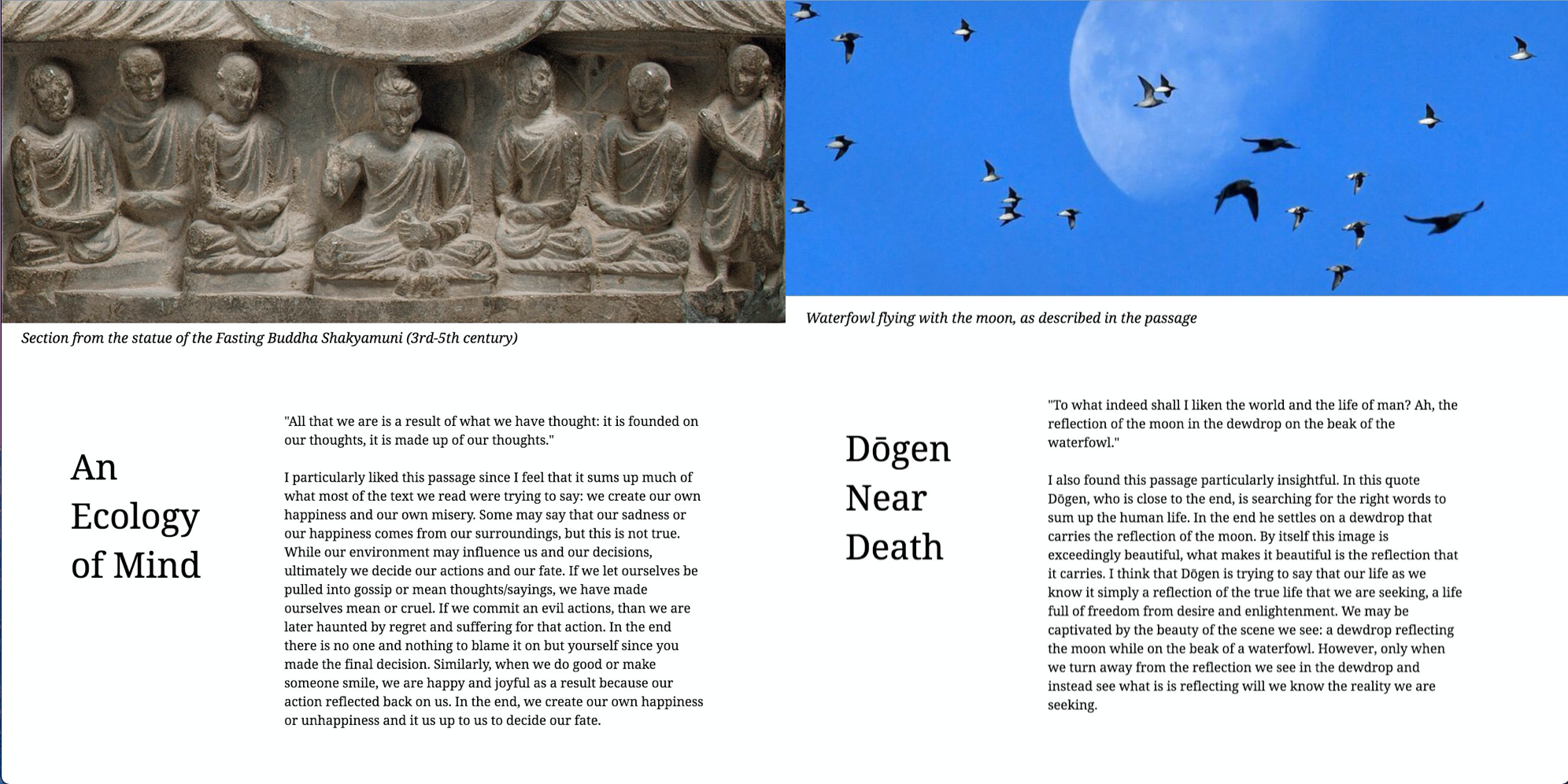








I have taught in middle and high schools. The courses I have designed have ranged from outdoor education to life science, and from global studies to philosophy. I have worked with administrators and teachers to integrate digital tools to enhance teaching and learning. I have written articles and given talks on grit, purpose, creativity, play, mindfulness, and why video games can be good for you. Whatever the educational environment or topic, I have witnessed one clear through line: people learn best when they can be creators and collaborators.
Some of the projects I’ve developed with students can be viewed and listened to below.
Big History Project
In our age of specialization and fragmentation, cross-pollination between disparate fields provides a touchstone for innovation. This is why consilience has been a north star for me. I have found that the most innovative ideas emerge from the intersection of the humanities and sciences. One project that expressed the unity of knowledge was a mural my 9th grade Global Studies classes created after learning about Big History. Big History is an interdisciplinary examination of our modern origin story through increasing thresholds of complexity: the Big Bang, star formation, creation of elements, Earth formation, emergence of life, and finally human culture and history unfold. Students created media rich eBooks containing comics, videos, and creative writing that demonstrated knowledge about each threshold of Big History. Then we worked collectively to create a mural in the center of campus that depicted the evolution of the universe from the Big Bang to the present. By sharing our project with the wider community students felt their learning was imbued with greater meaning because they were able to contribute something valuable beyond themselves. In highlighting the interconnection we share with all life, Earth, and stars, this project left us all feeling a little more at home in the universe.
Wabi-Sabi Design Thinking Project
One project that captures how creativity and collaboration supercharges learning emerged from a 12th grade elective I taught on Zen Buddhism. The culminating design thinking project was for students to work in pairs and create a wabi-sabi artifact for their partner that represented what they appreciated about this aesthetic that sees beauty in impermanence and imperfection. After empathy interviews, brainstorming sessions, and low-fidelity prototyping, students produced a diverse array of both digital and analog artifacts. The final products were tailormade and included a carved wooden cube inscribed with slogans, handmade soap with artistic designs, an arrangement of skeleton leaves, and a card deck composed of symbols. What inspired me about this project wasn’t the artifacts per se (though many were outstanding). It was the creative process and collaboration that hooked my attention. Because we live in a world of wicked problems many of our challenges exceed the capacity of individual creativity. As a result, it is only by working with other people that we can find the solutions we are looking for.
Electronic Books
In many of my classes I have had student produce electronic books to demonstrate their knowledge and creativity. This medium has enabled a greater range of expression by providing students with tools to incorporate text, photos, videos, and audio. Additionally, creating eBooks requires students to think about the role that design and aesthetics play in conveying ideas in compelling ways.
The Wisdom of Chaos
I interviewed my senior philosophy classes about what they found most meaningful about our course this semester: The Wisdom of Chaos - which uses chaos science as a metaphor for self-cultivation.
When most of us think of chaos, words like randomness, disorder, disruptions, and uncertainty come to mind - which we try to avoid like a zombie apocalypse. So it’s hard to imagine that anything good or wise can come from it. Yet Chaos theory has demonstrated that nature uses randomness, disorder and disruptions to create stellar nurseries, weather patterns, coral reefs, and new adaptive traits in organism. Chaos theory reveals that instead of resisting life’s uncertainties and randomness, we should embrace the creative potential they offer.
Artificial Intelligence
What is artificial intelligence? How is it currently being applied? How will it shape our social and economic futures? I talk about these question and more with Van Cline. Van is a graduate of San Domenico School. This podcast was a project for his Project Wayfinder class. Project Wayfinder is a purpose learning curriculum. Purpose can be defined as goals that are meaningful to the self and consequential to the world. Van does a great job of explaining AI and how it will reconfigure what it means to learn, works, and be human.
























